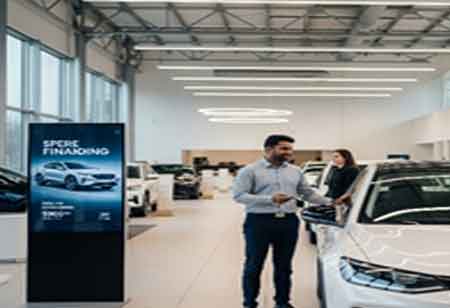THANK YOU FOR SUBSCRIBING
THANK YOU FOR SUBSCRIBING
Be first to read the latest tech news, Industry Leader's Insights, and CIO interviews of medium and large enterprises exclusively from Auto Tech Outlook

By
Auto Tech Outlook | Tuesday, July 22, 2025
Stay ahead of the industry with exclusive feature stories on the top companies, expert insights and the latest news delivered straight to your inbox. Subscribe today.
Fremont, CA: The automotive industry is evolving, and technological advancements are transforming how dealerships operate. While these innovations provide significant opportunities for growth and efficiency, they also introduce unique challenges. Dealerships must understand and navigate these challenges to thrive in an increasingly digital landscape.
Adapting to Rapid Technological Changes
One of the most significant challenges facing automotive dealerships today is the rapid pace of technological change. New software, platforms, and tools are consistently emerging, making it difficult for dealerships to keep up. The integration of advanced technologies, such as customer relationship management (CRM) systems, inventory management solutions, and digital marketing tools, requires dealerships to adapt their business processes continually.
To effectively navigate this challenge, dealership leadership must prioritize ongoing training and development for their staff. By investing in training programs that focus on new technologies, dealerships can ensure their employees remain proficient and confident in using modern systems. Additionally, staying informed about industry trends and participating in relevant workshops or conferences can help dealership employees understand best practices and innovative solutions that are on the market.
Balancing Technology and Customer Experience
While technology can enhance operational efficiency, dealerships must maintain a strong focus on the customer experience. The implementation of sophisticated systems, such as online purchasing options and virtual showrooms, can sometimes lead to a disconnect between customers and sales personnel. A common challenge is striking the right balance between automation and the personal touch that customers expect when making significant purchases, such as vehicles.
To address this challenge, dealerships should strive to create seamless digital experiences while preserving meaningful interactions with customers. This involves encouraging staff to utilize technology to enhance their engagement with customers rather than replace it. For instance, sales representatives can leverage CRM tools to gather insights about a customer's preferences and tailor their approach accordingly. By blending automation with human interaction, dealerships can offer a more personalized service that fosters trust and cultivates long-term relationships.
Overcoming Integration Issues
As automotive dealerships adopt new technologies, integrating these systems with existing infrastructure can pose a significant hurdle. Different platforms may not always communicate effectively with one another, leading to data silos and inefficiencies. For example, a dealership might have separate solutions for inventory management, accounting, and customer outreach, making it challenging to have a unified view of operations.
To minimize integration issues, dealerships should carefully evaluate the technology solutions they invest in. Opting for platforms that offer easy integration capabilities or are specifically designed for the automotive sector can alleviate many of the common pitfalls associated with technology adoption. Furthermore, involving IT professionals during the selection and implementation process can help identify potential compatibility issues beforehand. Providing a clear roadmap for implementation and encouraging collaboration among teams can also facilitate a smoother transition when integrating new technologies.
 Copyright © 2025 AutoTech Outlook. All Rights Reserved | Privacy Policy | Subscribe | Sitemap | About us | Feedback Policy | Editorial Policy
Copyright © 2025 AutoTech Outlook. All Rights Reserved | Privacy Policy | Subscribe | Sitemap | About us | Feedback Policy | Editorial Policy 



